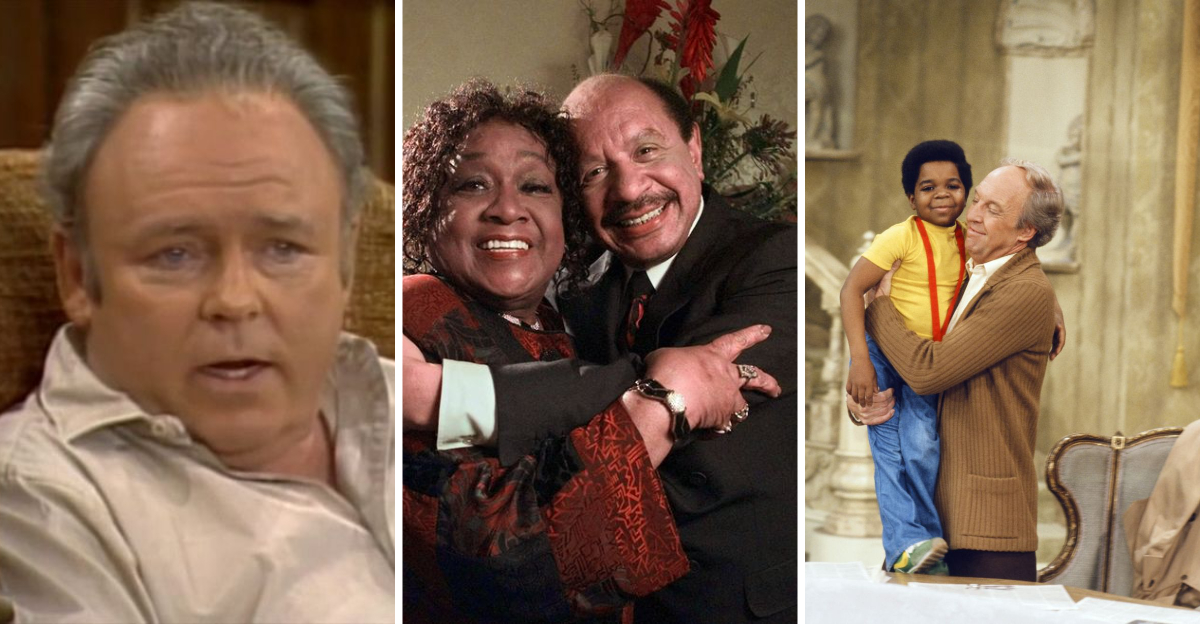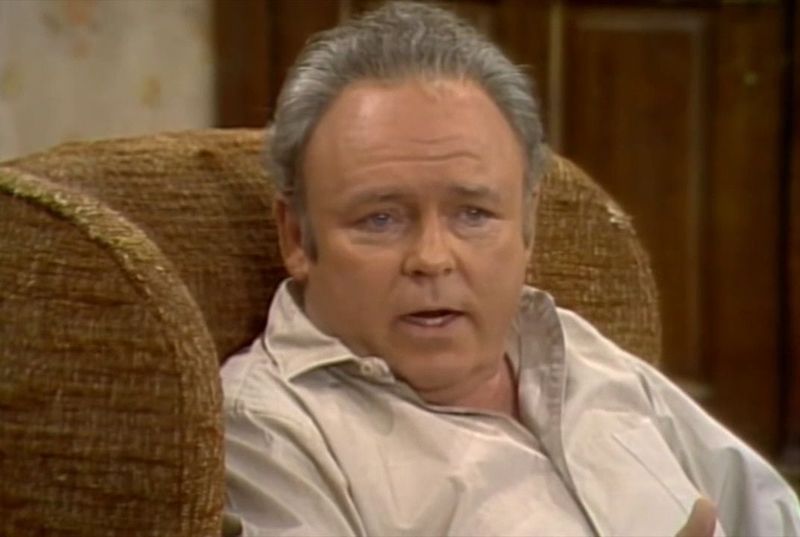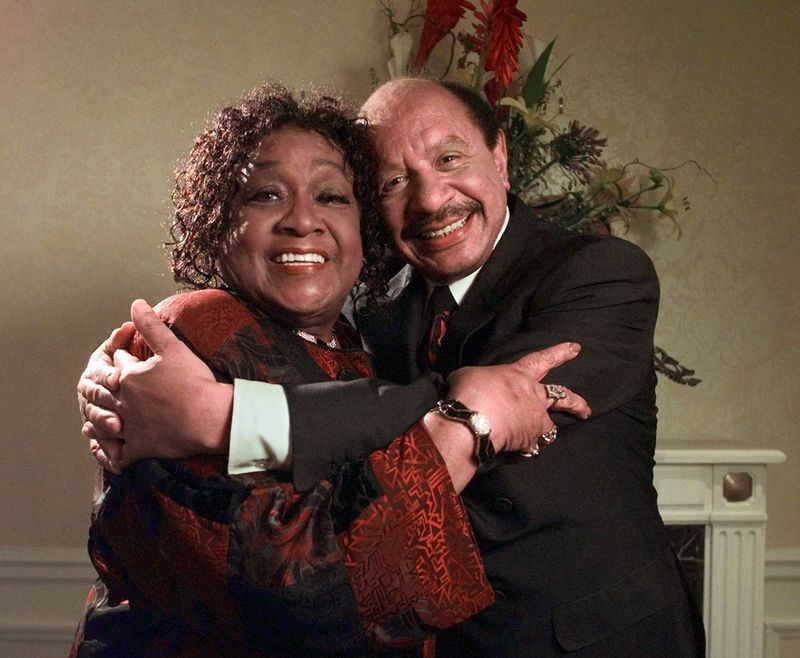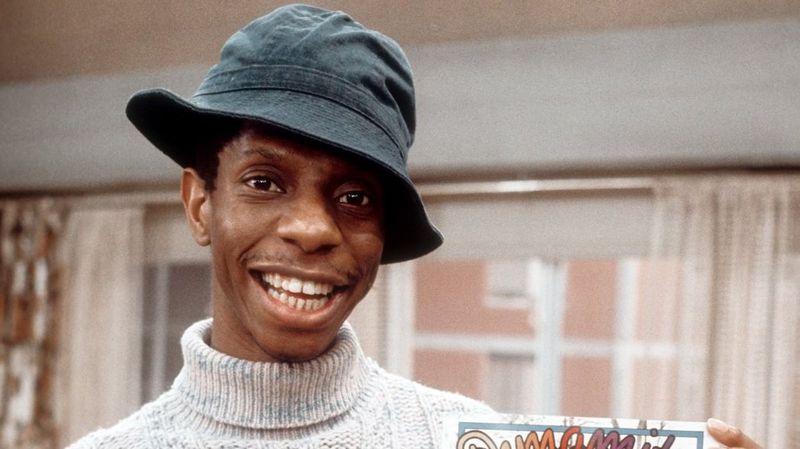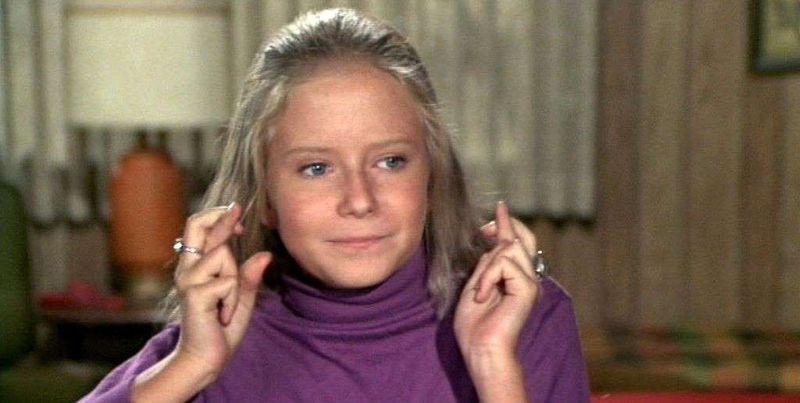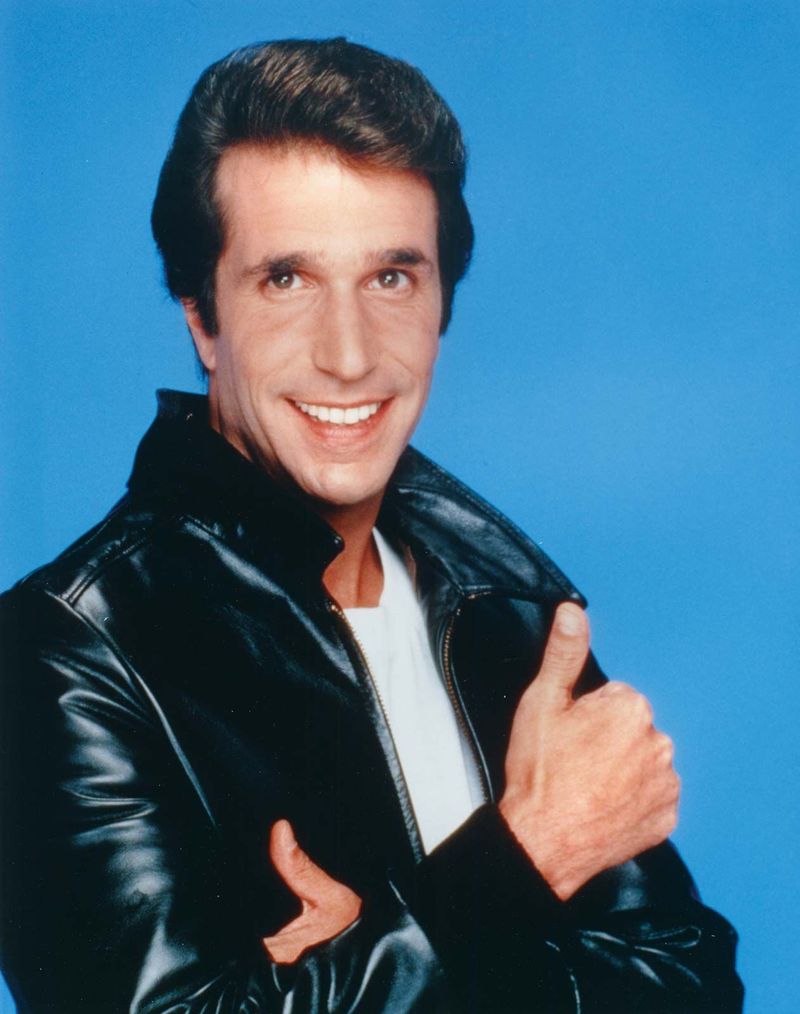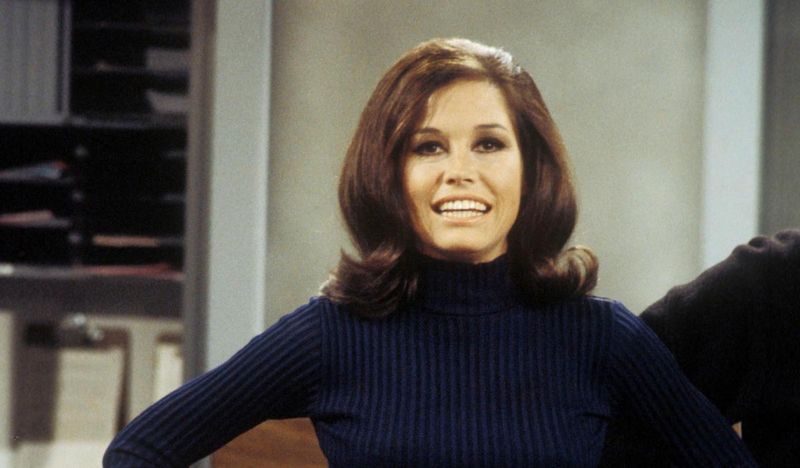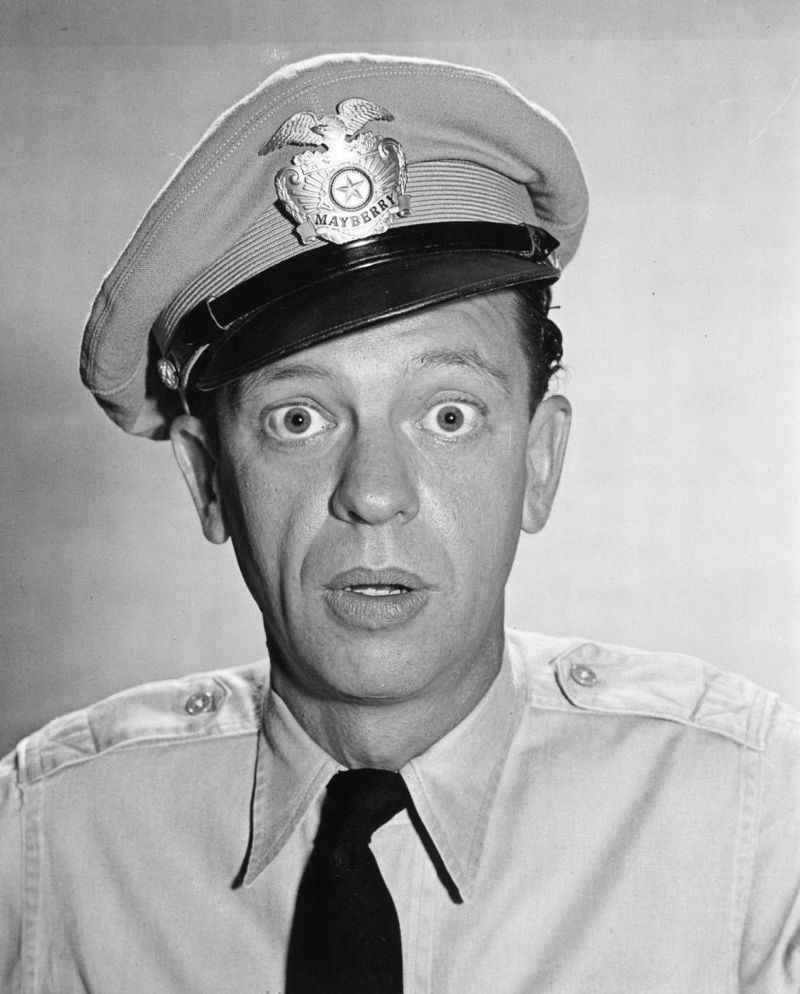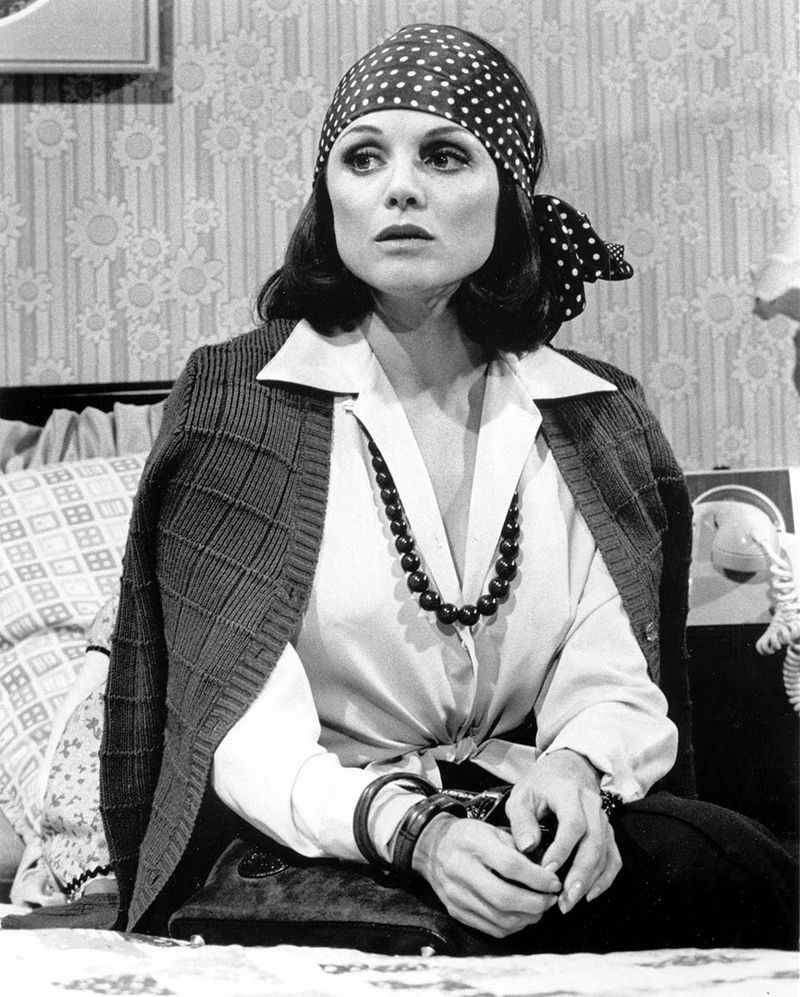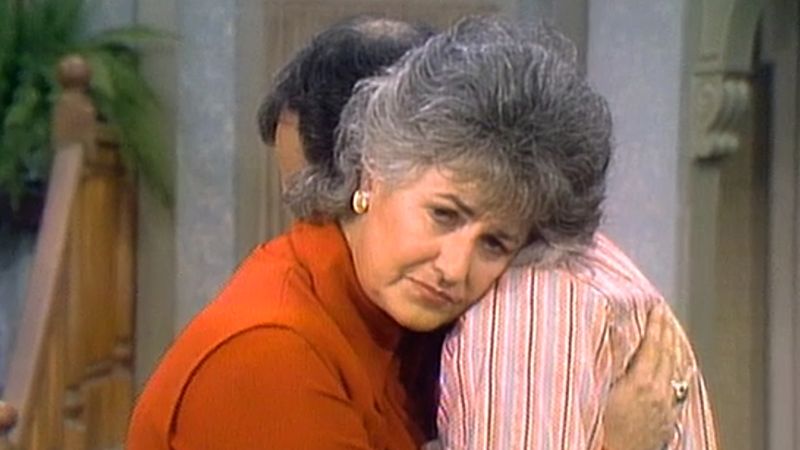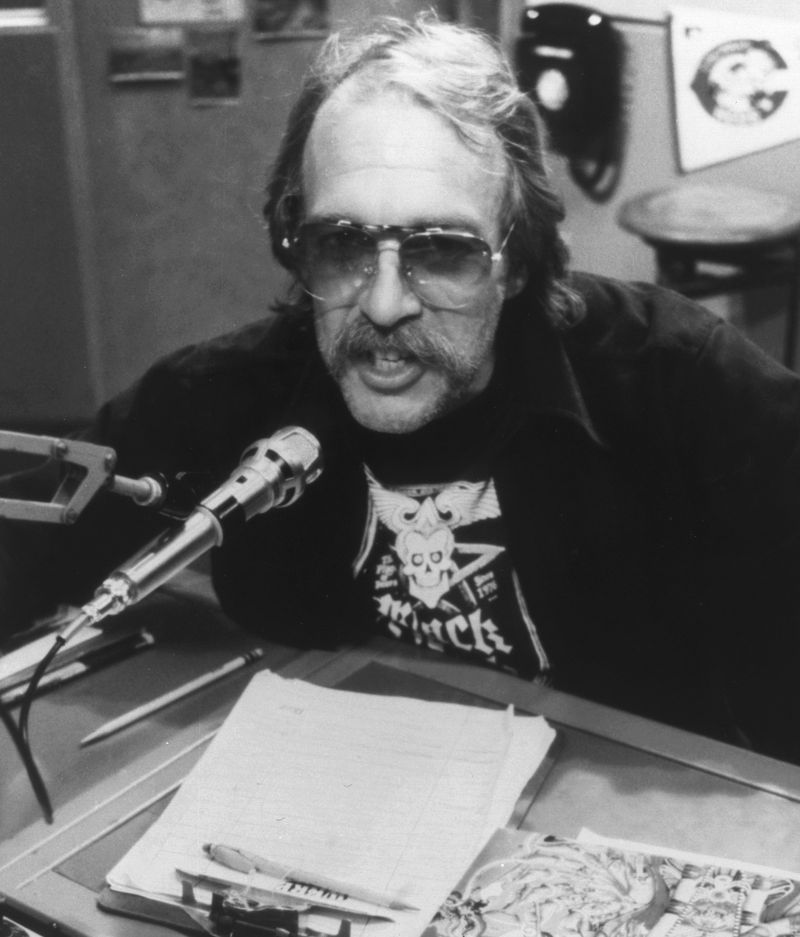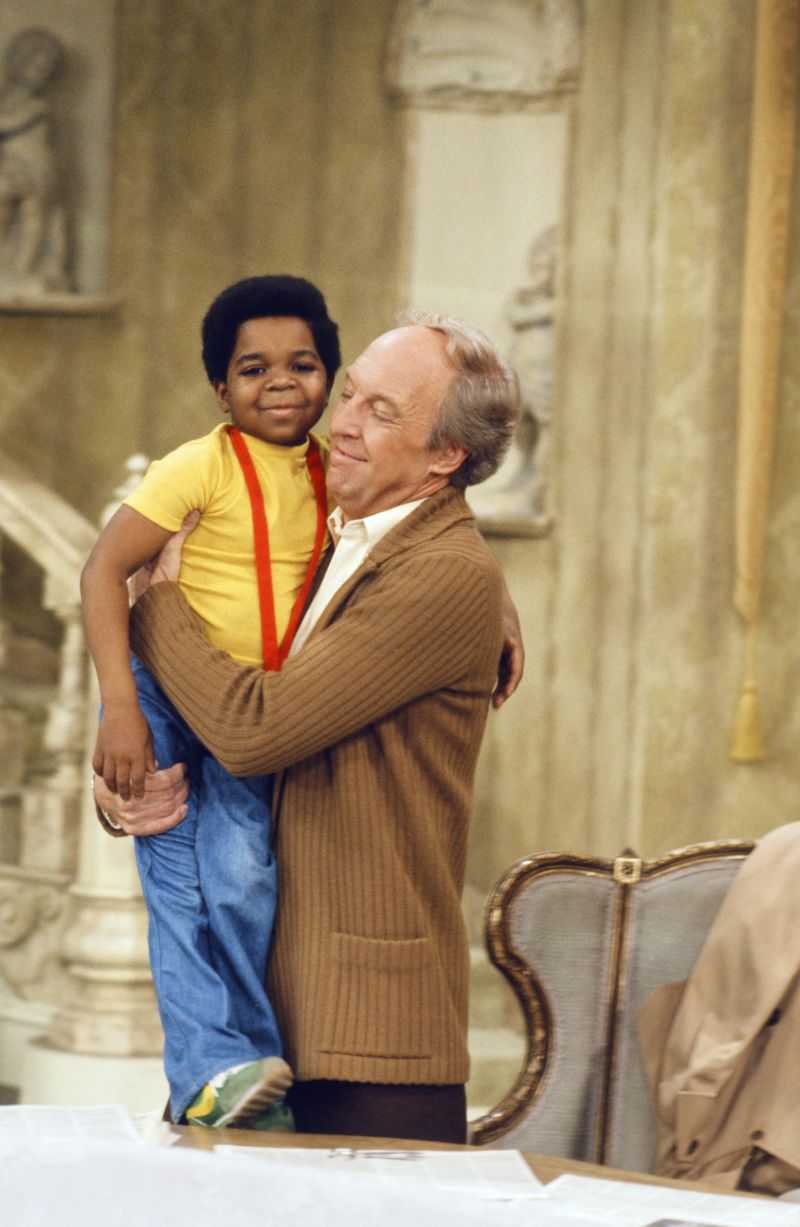Television in the 1970s brought us some of the most complex and layered characters ever to grace the small screen. Behind their eccentric behaviors, annoying habits, or seemingly villainous personas lurked deeper personalities that many viewers initially failed to appreciate. These characters challenged our perceptions, making us laugh while simultaneously tackling serious social issues of the era.
1. Archie Bunker (All in the Family)
Beneath the bigotry and bluster lived a man wrestling with a changing world. Carroll O’Connor brilliantly portrayed this working-class conservative whose offensive remarks were actually meant to expose prejudice, not celebrate it.
Archie’s character revealed unexpected depth when his vulnerabilities surfaced—caring for his wife Edith, showing occasional tenderness toward his liberal son-in-law, or confronting his own limitations. His struggles mirrored America’s painful evolution during a turbulent decade.
What critics missed was that Archie wasn’t meant to be admired but understood as a product of his generation, capable of small yet significant growth.
2. George Jefferson (The Jeffersons)
Strutting across television screens with his signature walk, George Jefferson’s apparent arrogance masked a lifetime of battling discrimination. Having clawed his way up from poverty to own a successful dry-cleaning chain, his prickly exterior served as armor against a society that constantly underestimated him.
Sherman Hemsley’s portrayal balanced outrageous comedy with subtle moments of vulnerability, especially in scenes with his wife Louise. His character’s determination to succeed represented the aspirations of many Black Americans during the post-Civil Rights era.
Far from just a loudmouth, George embodied the complicated reality of achieving the American Dream while carrying the scars of systemic racism.
3. J.J. Evans (Good Times)
His catchphrase “Dyn-o-mite!” echoed through living rooms across America, but J.J. Evans was far more than comic relief. Living in Chicago’s housing projects, this talented artist used humor as a survival mechanism against crushing poverty and limited opportunities.
Critics who dismissed Jimmie Walker’s character as a stereotype missed his underlying complexity. J.J.’s artistic talents represented hope and potential, while his jokes masked the pain of a young man forced to grow up too quickly.
The character embodied a paradox—maintaining dignity and dreams despite circumstances designed to extinguish both. His resilience made him not just funny but profoundly human.
4. Fred Sanford (Sanford and Son)
Clutching his chest with theatrical flair, Fred Sanford’s famous line “Elizabeth, I’m coming to join you, honey!” masked genuine heartbreak. This junkyard owner’s cantankerous demeanor concealed a man still mourning his beloved wife while struggling to connect with his son Lamont.
Redd Foxx brought unexpected depth to what could have been a one-note character. Fred’s schemes and complaints stemmed from fear—of aging, loneliness, and being left behind in a changing world.
His South Central Los Angeles junkyard business represented both his limitations and his resourcefulness, making something valuable from what others discarded, much like Foxx did with this seemingly simple character.
5. Jan Brady (The Brady Bunch)
Forever trapped between her perfect older sister and cute younger one, Jan Brady’s frustration crystallized in her famous lament: “Marcia, Marcia, Marcia!” Eve Plumb’s portrayal captured the universal agony of middle-child syndrome with surprising authenticity for a sitcom.
Jan’s identity struggles resonated with viewers navigating their own adolescent insecurities. Her experiments with wigs, glasses, and personality shifts weren’t just comic fodder but reflected genuine teenage angst about belonging and self-worth.
While often played for laughs, Jan’s character offered surprising emotional depth in a show that typically glossed over serious issues, making her the most relatable Brady for many viewers.
6. Fonzie (Happy Days)
With a leather jacket and a thumb’s up, Arthur Fonzarelli seemed like just another TV tough guy. Henry Winkler’s nuanced performance revealed something far more interesting—a dropout who valued education, a loner who prioritized friendship, a rebel with an unwavering moral code.
Originally intended as a minor character, the Fonz became the show’s heart because audiences recognized his authenticity. His cool exterior concealed someone who’d overcome a difficult childhood and abandonment issues.
Fonzie’s evolution from stereotypical bad boy to surrogate big brother for the Cunningham family challenged viewers’ preconceptions about masculinity and strength. His famous “Ayyy!” masked surprising emotional intelligence.
7. Mary Richards (The Mary Tyler Moore Show)
Her iconic hat toss symbolized liberation, but many viewers initially mistook Mary Richards’ politeness for weakness. As an unmarried woman pursuing a career in a male-dominated newsroom, her gentle approach masked revolutionary determination.
Mary Tyler Moore created a character who navigated sexism without becoming bitter, maintained dignity without sacrificing warmth. Her struggles with dating, career advancement, and finding her voice resonated with women entering the workforce during the women’s movement.
Her character’s strength wasn’t in grand statements but in quiet persistence—showing up daily, doing excellent work, and gradually earning respect in a world designed to undervalue her contributions. Mary made feminism accessible without ever labeling it as such.
8. Barney Fife (The Andy Griffith Show)
Deputy Barney Fife’s comical incompetence made audiences laugh, but Don Knotts created a character of surprising emotional complexity. His exaggerated self-importance and by-the-book approach masked profound insecurity and a desperate need for respect in Mayberry.
Though the show began in the 1960s, Barney remained a cultural touchstone throughout the 70s in syndication. His nervous energy, failed romances, and touchingly loyal friendship with Andy revealed a man perpetually trying to prove his worth.
Beneath the physical comedy and malapropisms was someone fighting to be taken seriously—a universal struggle that made this seemingly simple character resonate across generations. His single bullet symbolized both his limitations and his potential danger to himself.
9. Rhoda Morgenstern (The Mary Tyler Moore Show & Rhoda)
Behind the wisecracks and self-deprecating humor stood a woman battling profound insecurity. Valerie Harper’s portrayal of Rhoda Morgenstern captured the complexity of a character who used humor as both shield and weapon.
As Mary Richards’ best friend and later in her own spinoff, Rhoda’s brash New York personality contrasted with Mary’s Midwestern politeness. Her struggles with weight, romance, and career disappointments made her revolutionary—a female character allowed to be imperfect yet lovable.
Rhoda’s journey from insecure window dresser to confident businesswoman paralleled many women’s experiences during the decade. Her sarcasm masked vulnerability that made her one of television’s most authentic female characters.
10. Hawkeye Pierce (M*A*S*H)
Martinis in the Swamp and practical jokes belied Hawkeye Pierce’s profound moral struggles. Alan Alda created a character using humor and womanizing as thin armor against the psychological devastation of war.
As chief surgeon in a mobile Army hospital during the Korean War, Hawkeye’s irreverence toward military authority wasn’t simple rebellion but a principled stance against the dehumanizing effects of combat. His drinking and pranks masked a physician witnessing unbearable suffering daily.
The character’s evolution throughout the series revealed increasing psychological trauma beneath his jovial exterior. His wit served as both entertainment for viewers and a realistic portrayal of gallows humor as a survival mechanism in impossible circumstances.
11. Maude Findlay (Maude)
Tall, imposing, and unabashedly liberal, Maude Findlay appeared to many viewers as merely abrasive. Bea Arthur’s groundbreaking character challenged the notion that female protagonists needed to be likable above all else.
As Edith Bunker’s cousin and political opposite to Archie, Maude tackled controversial issues including abortion, alcoholism, and mental health. Her outspoken feminism and four marriages made her revolutionary for 1970s television, though her righteousness sometimes masked her own insecurities.
The character’s courage in confronting societal taboos came at a personal cost, revealing the complicated reality of being a trailblazer. Maude’s struggles with depression humanized what could have been a one-dimensional political mouthpiece.
12. Lou Grant (The Mary Tyler Moore Show)
“You’ve got spunk. I hate spunk!” Lou Grant’s gruff exterior concealed a newsman of surprising depth and compassion. Edward Asner created a character whose traditional masculinity masked genuine vulnerability and principled journalism.
As Mary Richards’ boss, Lou’s brusque demeanor and drinking problems stemmed from personal struggles—divorce, loneliness, and the challenges of maintaining journalistic integrity in a changing media landscape. His character successfully transitioned from sitcom to drama, revealing layers only hinted at in comedy.
Lou represented old-school values adapting to societal change, particularly regarding women in the workplace. His grudging respect for Mary’s competence modeled how men of his generation could evolve without losing their identity.
13. Chrissy Snow (Three’s Company)
Blonde hair, squeaky voice, and apparent naivety led many viewers to dismiss Chrissy Snow as just another dumb blonde stereotype. Suzanne Somers infused this seemingly one-dimensional character with surprising warmth and emotional intelligence.
As one-third of the roommate trio in the groundbreaking sitcom, Chrissy’s misunderstandings drove much of the show’s comedy. Yet beneath her malapropisms and confused expressions lay a genuinely kind person whose rural upbringing explained her occasional innocence about urban life.
Her character’s optimism and trust in others served as a counterbalance to her more cynical roommates. Chrissy’s apparent simplicity often revealed a different kind of wisdom—an emotional honesty others lacked.
14. Benson DuBois (Soap & Benson)
Initially introduced as the Tate family’s sardonic butler in “Soap,” Benson DuBois transcended the problematic servant stereotype through Robert Guillaume’s nuanced performance. His deadpan reactions and withering glances masked the show’s most intelligent character.
Benson’s unprecedented character evolution took him from domestic worker to state budget director and eventually gubernatorial candidate. His biting wit served as both comic relief and social commentary on race relations during a transitional period in American history.
What appeared as insubordination to some viewers was actually Benson’s refusal to be diminished by his position. Guillaume created a character whose dignity remained intact regardless of circumstances, making Benson revolutionary in television’s portrayal of Black characters.
15. Dr. Johnny Fever (WKRP in Cincinnati)
Sunglasses indoors, questionable fashion choices, and erratic behavior made Dr. Johnny Fever easy to dismiss as just another burnout. Howard Hesseman portrayed a complex character whose rebellious persona masked genuine disillusionment with corporate radio.
As WKRP’s morning DJ, Johnny’s unconventional style and frequent job changes before landing at the struggling station hinted at a man unwilling to compromise his principles for commercial success. His encyclopedic musical knowledge and commitment to artistic integrity made him the soul of the station.
Johnny represented countless creative professionals forced to choose between authentic expression and financial stability. His apparent laziness concealed a passionate defender of rock music’s countercultural importance.
16. Alice Hyatt (Alice)
“Kiss my grits!” became her waitress colleague Flo’s catchphrase, but Alice Hyatt was the emotional anchor of this groundbreaking series. Linda Lavin portrayed a widowed mother working at Mel’s Diner while pursuing her singing dreams—a realistic depiction of working-class single motherhood rarely seen on television.
Alice’s determination to provide for her son Tommy while maintaining her own aspirations challenged the period’s limited expectations for women. Her practical approach to life’s challenges concealed both grief over her husband’s death and anxiety about her uncertain future.
The character’s warmth and resilience made her struggles relatable to millions of Americans facing similar economic pressures. Alice represented dignity in difficult circumstances without sentimentalizing poverty.
17. Arnold Jackson (Diff’rent Strokes)
“Whatchu talkin’ ’bout, Willis?” became a national catchphrase, but Gary Coleman’s Arnold Jackson offered more than just cute one-liners. As an orphaned Black child adopted by a wealthy white businessman, Arnold navigated complex issues of race, class, and family with surprising depth for a sitcom character.
His skeptical reactions and precocious humor masked the insecurities of a child who had experienced profound loss and displacement. Arnold’s small stature and big personality made him instantly lovable, but his character also addressed serious social issues through a child’s perspective.
Coleman’s natural charisma and perfect comic timing sometimes overshadowed the groundbreaking nature of a show tackling transracial adoption and economic inequality in primetime television.
